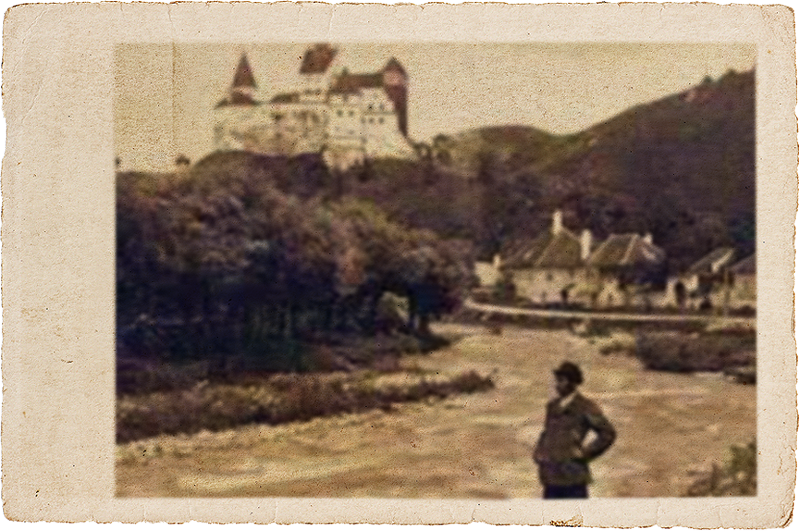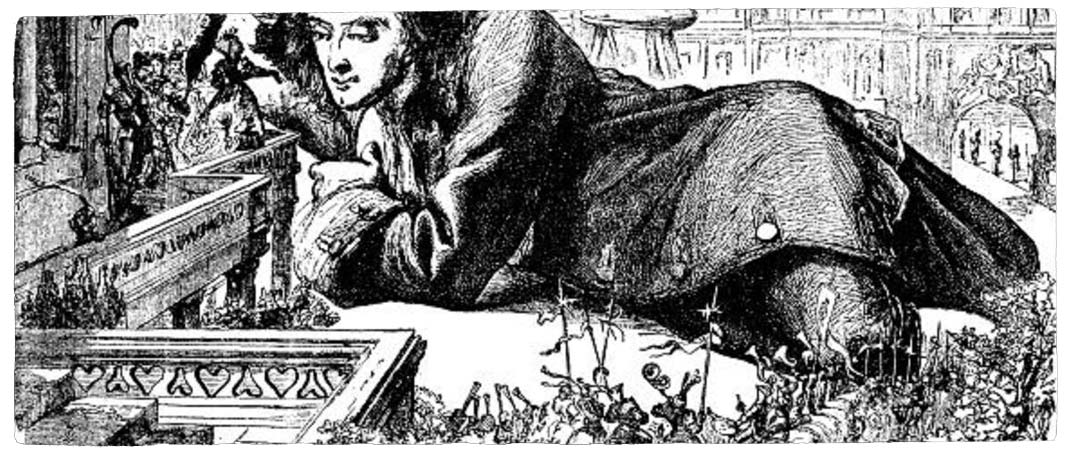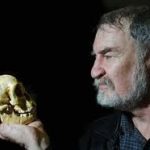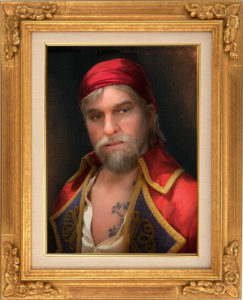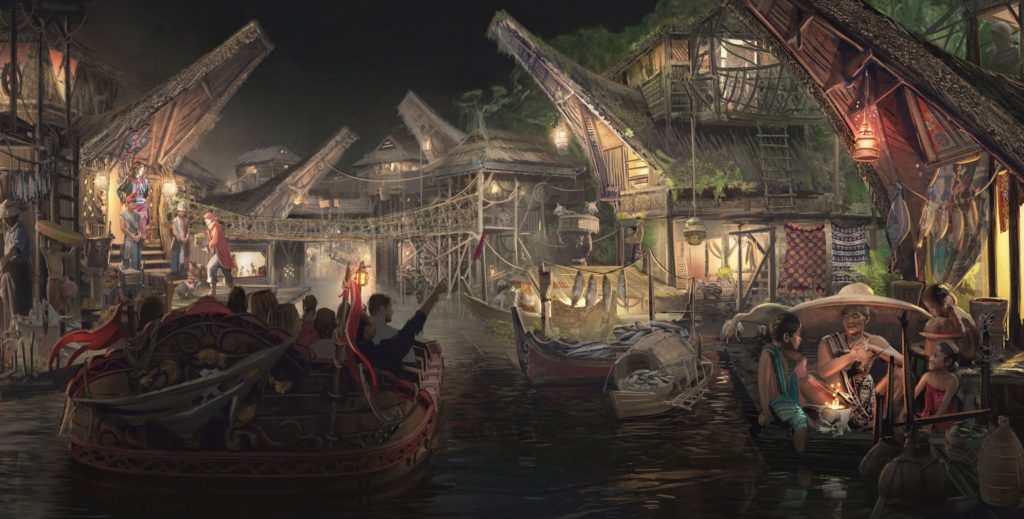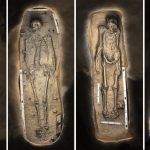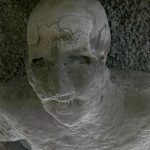The Curse of the Sphinx
Luc Barré, passionate archaeologist and historian, and member of ACE since 1920, set off in 1925 to uncover the Sphinx of Giza.His diary is preserved only in fragments.
In the Castle of Prince Drăculea
At the incredibly young age of only 23 years old, a fresh-faced Abraham Vambery joined the Adventure Club of Europe. He had impressed the other members of the Adventure Club of Europe (ACE) with his linguistic prowess speaking, already at his young age: Mandarin, Afrikaans, Farsi, Dari, Tädschiki, and 13 other – long since dead – East Frisian dialects. Through a secret donation, the ACE supported the publication of his German-Breton dictionary in 1868.
![]()
Ten years later he reported on how he travelled, dressed as a dervish, through Armenia and Persia, and how he got to Central Asia using a false name. These expeditions, amongst others, have been published in his travelogues My Hiking Tours and Experiences in Persia and 100 Constipation-Safe Meals in Central Asia, which can be found in any secular library.
Of his many expeditions there is only one on which Abraham Vambery did not publish a report. This took the shape of an adventure in 1878 where he would take a map and a ticket for a one-month trip all the way to Transylvania in Romania. Vambery called a halt to this now infamous trip after only two weeks and has remained silent ever since about his experiences. At a meeting of the Adventure Club of Europe in London in 1890, Vambery alluded to his trip vaguely in a lecture he was giving on ‘Learning from failed expeditions’.
In ACE’s 1890 yearbook, we find the following entry on his expedition:
Vambery recounted in discursive …
… words and with wit and humour his arrival in Siebenbürgen. His desperate search for an inn, in which he played – convincingly and life-like – the encounters with other people, made tears of laughter come into the listeners‘ eyes. A local woman gave him, for example, a rosary for protection. Instead of an inn, he ended up in the house of the Romanian Prince Drăculea. Vambery portrayed his impression of the place so impressively that the club members’ laughter suddenly turned into a deathly hush. He spoke of rooms he was not allowed to enter, and a moment of horror, when he thought he saw Prince Drăculea climbing the wall like a lizard.
Vambery, whom we know as intrepid and courageous from many expeditions, who is not afraid of disguise, false identity and political crises, felt a panic fear of death in the castle that culminated to the point that he believed he had to die the same evening. For days – and here Vambery’s report began to falter – he must have tried in vain to leave the castle before he managed to escape after a tough week. Out of curiosity and interest, the comrades of the Adventure Club of Europe tried to find further details through Vambery, regarding the encounter with the mysterious Prince and his residence, but white as a sheet and silent as this one suddenly became, this seemed impossible.”
On that evening, Bram Stoker, who later became a world-famous author, sat in the London audience. Until late in the night he would have been asked for further information about Vambery’s journey before Vambery finally gave him an insight into his diary from that time. According to unconfirmed rumors, Stoker’s most important novel, Dracula, is based on Vambery’s diaries.
![]()
The little people of Flores
It was May 1700 when Montgomery Flynn first entered the Indonesian island of Flores. Exhausted by a sea raid on a French ship, he decided to rest with his band of pirates to build up their energy levels.
![]()
As always, he left the troops alone to explore the unspoiled new island.
“Once I had been on the island for the duration of an hour I found myself in very strange camp”,
wrote Flynn in his secret diary – now available to the Adventure Club of Europe (ACE).
“It looked as if it were populated by humans but everything seemed far too small. Small tents made of animal skin and measly stone tools, all looking as if they had been made for the hands of a toddler.”
Flynn suddenly noticed that he was not alone.
They came at me from all sides. Tiny people, hardly any bigger than a meter in stature. I pulled out my sabre. They became frightened. None of them seemed to be a danger to me so I put my sabre away, approached them, and knelt down.”
It was then that Flynn experienced a wonderful, warm welcome from the small people who had apparently never seen a man as big as him. Carefully they touched his face and hands.
“The smallest among them, their children, were no greater than one cubit. Then suddenly more of the little ones rode on elephants into the camp and greeted me. Their elephants were no greater than a simple hound and tame as riding horses. “
The small people of Flores shared their food with Flynn, proudly presenting their tiny tools, one of which they gave to him as a gift. When he returned to his crew in the evening, he wrote the following:
“Nobody should ever find out that here in Flores, in the midst of pirate-ridden waters, live such small, wonderful, and vulnerable people. If the merciless pirates knew of them, these little people would be lost forever.”
Flynn departed once again and kept his encounter with the little ones secret for 10 years, never telling anyone about it. Then, in November 1710, he set sail for the port of Dublin. He was full of rage and sorrow having been accused of fraud. He opened his heart to a man named Jonathan Swift, who happened to be sitting next to him in a pub. As it turned out, Swift was a writer who found himself captivated by Flynn’s exotic discoveries. Trustworthy as Swift was, he managed to elicit Flynn’s mysterious encounters with the little people of Flores. Flynn agreed at the end of the evening that Swift could use his experience as the inspiration for a novel, but made him swear to neither reveal him as a source nor the true location of the tiny ones.
16 years later, Jonathan Swift published the novel Gulliver’s Travels in which he described a journey into the land of the Lilliputians – the small people once known by Montgomery.
Today Flynn’s secret diaries are in the safe hands of the Adventure Club of Europe. The Flynn collection also features the tiny stone tool gifted to him by the little people of Flores. In 2003 there was great turmoil within the ACE as the authenticity of Flynn’s report seemed then to be confirmed.
On the island of Flores researchers discovered the bones of a tiny person. The new human species Homo Floresiensis was baptized. Similarly, the bones of a dwarf form of a Stegodon were found too, a species closely related to the elephant.
In the possession of the Adventure Club of Europe:
Artefacts:
- keleton of the Homo Floresiensis
- Flynn’s diaries
- Tiny stone tool
![]()
The Magic Dagger of Batavia
The Dutchman Bartholomeus van Robbemond would not have dreamed that his entire life would change when, in 1714, he neared the end of his search for the legendary dagger of Batavia.

As a ship’s boy hired by the Vereenigde Oost-India Company or Dutch East India Company, the young Robbemond had heard of a magical dagger in Batavia. The old sailor’s legend never left the bright adventurer, and so many years later, when he had his own ship, he went in search of the dagger himself.
The dagger, also called a Kris, was an asymmetrical dagger with the magical ability to make its wielder invulnerable. It was also referred to as the reverent ‘Fire Tiger’.
‘It’s enough to turn the blade on someone, his bones become dust and his hair becomes ashes’,
Robbemond wrote in his logbook, among other things.
The legend of the Fire Tiger, which had another name of ‘Harimau Api’, tells the story of a little boy in Sumatra. The boy once rescued a baby tiger from a fire and the two quickly became inseparable friends. But when, many years later, the boy’s tribe was attacked, the tiger died in battle as he protected the boy. Reflecting on revenge and protecting his tribe, the boy asked the gods for help. He was told that he should build a big fire, from which the tiger would be resurrected. The boy followed the instruction and indeed the spirit of his tiger friend rose from the flames, carrying a dagger in his mouth. The boy grew into a young man who would use the dagger to defend his village against other attackers. He was appointed chief of the tribe and bore the name of the Tiger King, his people being called the Tiger Warriors. When, after many decades, the Tiger King died, the indestructible dagger was hidden in a temple in the jungle so that it would never fall into the wrong hands.
When van Robbemond came into possession of a map with the exact location of the dagger, he could finally uncover the legend which had fascinated him since he was a child. He also wanted to find the dagger before adversary Cortez, who only sought to abuse the magical powers of the dagger for his own purposes.
Van Robbemond made it to Batavia ahead of Cortez and fought his way through the jungle past tigers until he finally held the Harimau Api in his hands and later stored it.
These exciting events would change van Robbemond’s worldview forever, and ultimately lead to the founding of ACE. The VOC logo is still recognisable in the weathered wood of the dagger’s case, even after all these years.

For hours, one of the co-founders of the ACE, Frederik Hornung, stared at the logo, viewing it from all directions. Finally, in a trance, he designed the logo that still stands for the Adventure Club of Europe – it is said that the brainchild burst forth from him, as he looked upon VOC logo…
The pirates set course for Batavia… To be continued!

The mysterious Medusa statue
“And those who see your face, may they instantly solidify into stone.”
– Athena to Medusa, Greek mythology
![]()
It was the morning of May 5 1905 when a letter from Anna von Blom, a Dutch scholar of Grecian culture and archaeologist, caused incredulous agitation in the Adventure Club of Europe (ACE).
Honourable ladies and gentlemen,
I now believe I have found what my companions and I have been seeking for years. Definitive proof of the existence of the most famous of all the Gorgons, the Medusa. Solidified into stone, her face turned into a hideous grimace, it was with much shock that this morning we happened upon the ghostly statue.
With the help of the locals the figure was recovered from a buried temple near Marrakech at the foot of the Atlas Mountains. The weight was unimaginable, the stone of the most flawless countenance. Holding her hands still in front of her face, she closely matches the descriptions made by Hesios and Aeschylus. I tell you this now – inside this statue there is a human being, solidified into stone by the sight of the Medusa.
It fills me with joy to finally be able to share this important discovery with you.
Sincerely,
AvB“
Even before Anna von Blom returned to Europe, a hot debate developed around her astounding discovery. While the newspapers refused to print the incredible archaeologist’s claim, supporters were quickly found within the Adventure Club of Europe who wanted to enable Anna von Blom to make contact with German physicist Wilhelm Conrad Röntgen. He was the one who only a few years before discovered the so-called x-ray, with which it was possible to screen the inside of solid objects from the outside. This would ensure the innermost part of the statue was not visible to the naked eye. Röntgen, who four years previously was awarded the first Nobel Prize in physics, initially refused to comply with this dubious request, deciding it was better to refute Blom’s claim publicly with the help of his x-ray apparatus rather than support it.
When Anna von Blom finally reached the x-ray laboratory in July 1905 the tension was overwhelming. Members of the ACE, along with selected archaeologists, eagerly awaited the result, which W. C. Röntgen initially – according to witnesses – reluctantly showed.
Walter Altmann, a former member of the ACE, describes the first moment after seeing the radiograph as ‘truly breathtaking’.
No one said anything. Many of us even forgot to take a breath”,
his diary reads.
A skeletal contour was evident in the picture. Even the shadows of the different organs could be seen.”
Finally, Anna von Blom herself broke the silence saying simply,
‘I told you’.
Now that even a renowned physicist had given Anna von Blom’s theory weight, the headlines in the press started to roll out. In summer of 1905, the ‘Medusa Statue’, which had an estimated age of around 2700 years, was the topic of every discussion throughout Europe and America.
The majority of the scientists, however, believed that, similar to the plaster models of the Pompeii dead, it was the victim of a volcanic eruption whose bones and intestines were buried and preserved under a layer of ash. Later, it was thought in these circles, a second volcanic eruption probably filled the human cavity under the ashes with liquid basalt.
Anna von Blom, convinced that a large part of the Greek mythology was based on actual human history, vehemently contradicted her critics. It was no coincidence that the statue had been found in the Atlas Mountains – the mountain itself, according to myth, had been created by the fossilization of the Titan Atlas. For volcanic effusion rock, it seemed to von Blom, the surface of the statue was much too fine and the density too massive.
After her death in 1931, Anna von Blom bequeathed the statue to the Adventure Club of Europe. Meanwhile, researchers have confirmed that at the time of the creation of the statue no earthquake took place in the vicinity of the Atlas Mountains.
In the possession of the Adventure Club of Europe:
Artefacts:
- Statue
Photos:
- X-ray images of the statue
- Photos of the meeting between Anna von Blom and Wilhelm Conrad Röntgen
![]()



